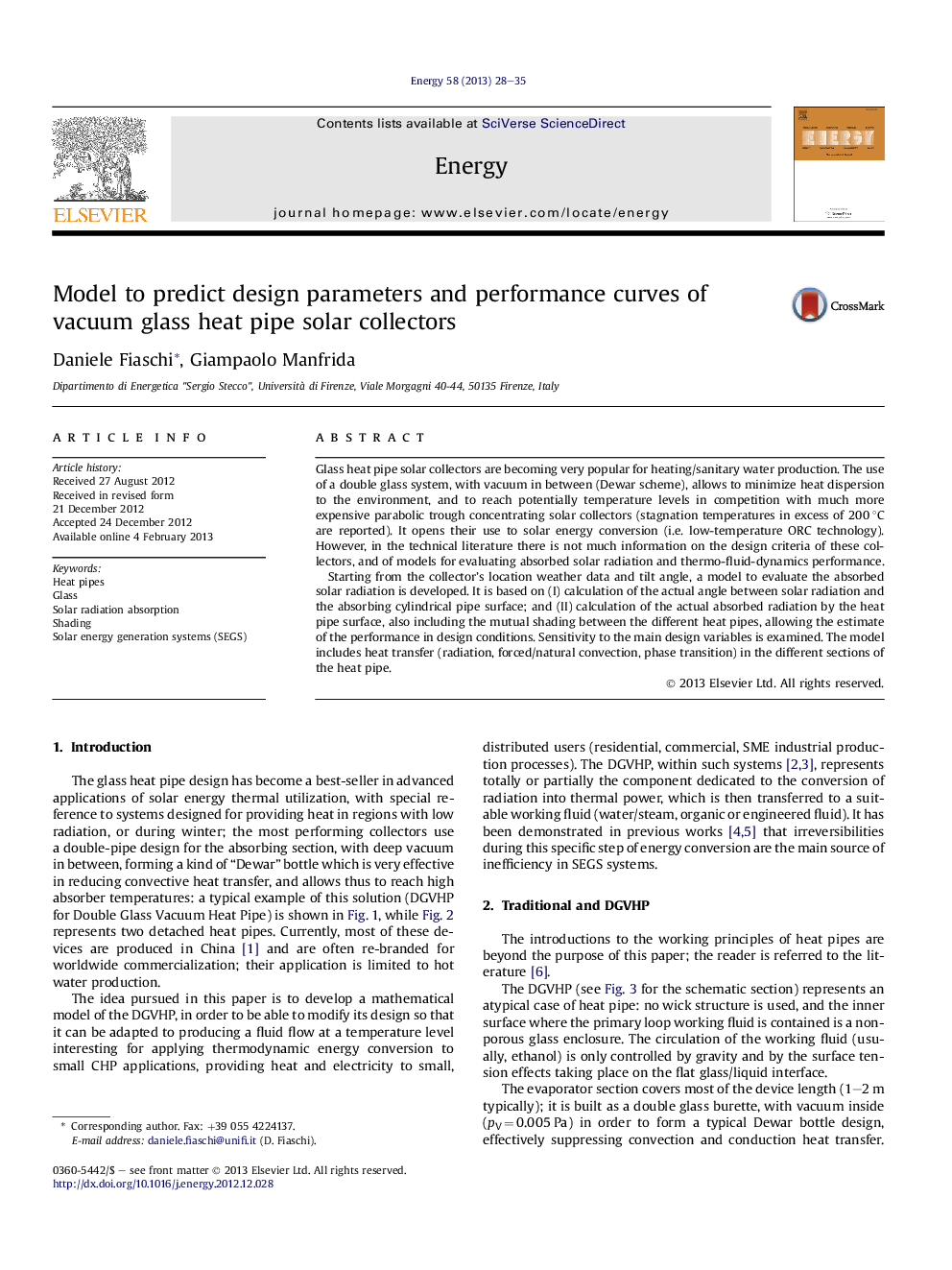| Article ID | Journal | Published Year | Pages | File Type |
|---|---|---|---|---|
| 1732865 | Energy | 2013 | 8 Pages |
Glass heat pipe solar collectors are becoming very popular for heating/sanitary water production. The use of a double glass system, with vacuum in between (Dewar scheme), allows to minimize heat dispersion to the environment, and to reach potentially temperature levels in competition with much more expensive parabolic trough concentrating solar collectors (stagnation temperatures in excess of 200 °C are reported). It opens their use to solar energy conversion (i.e. low-temperature ORC technology). However, in the technical literature there is not much information on the design criteria of these collectors, and of models for evaluating absorbed solar radiation and thermo-fluid-dynamics performance.Starting from the collector’s location weather data and tilt angle, a model to evaluate the absorbed solar radiation is developed. It is based on (I) calculation of the actual angle between solar radiation and the absorbing cylindrical pipe surface; and (II) calculation of the actual absorbed radiation by the heat pipe surface, also including the mutual shading between the different heat pipes, allowing the estimate of the performance in design conditions. Sensitivity to the main design variables is examined. The model includes heat transfer (radiation, forced/natural convection, phase transition) in the different sections of the heat pipe.
